Modernist Textile Design: Perfectly Patterned
If we wanted to begin, and then immediately end, the discussion on textile design during the Modernist period we could’ argue that to remain loyal to Modernist design in its purest form, the colorful patterns we associate with the period just couldn’t exist.’ Because in Modernist design of the purest form,’ there is no tolerance for ‘patterns’ or ‘color’.’ I confess, I’m not a purist.’ I love patterns.’ And I really love color.’ There, I said it.
However, in the Modernist Movement, there were several subdivisions of interpretation. All affirming the mantra of ‘Form follows function’, each expressed itself in slightly different focuses. In our pursuit of understanding textile design during the Modernist era, we will take particular note of the following tenets:’ Functionalism, along with the British version, Industrial Art; both of which are extensions of the Modernist movement. Both of which have lots of designers who loved patterns and color.
As with all aspects of Modernism, textile designers gave much thought to a fabric’s beauty and use. The use of bold color after surviving amidst a’ grey, war-torn world.’ Abstract, geometric prints, or interesting motifs in nature and daily life. Texture. New and accessible synthetic fabrics. Art covering a sofa. Art covering a body.
In the 1920’s block printing, primarily seen on paper until now, became the darling of textile design. Advancement in industry presented the potential of mass-produced fabric printing, yet some designers strictly preferred to hand carve the blocks and hand stamp their fabrics; doing so gave them more control in color, textures and forms. Hand stamping also allowed freedom to mix or shift stamps to alter the shapes.’ One such designer was Enid Marx who started her own workshop in Hampstead, England in 1927. Primarily using linen, muslin, and organdies Marx’s designs varied from small vignettes to bold geometric repeats using natural dyes. In 1938 and 1940, Marx was commissioned by the London Underground Transit to design a “˜moquette’, a carpet or pile upholstery fabric, for seating on some of the train lines.’ She created a bold geometric of red and green “˜shields’ to cover the bench seats.
 “Shields” moquette,’ London Underground Transit, Enid Marx, 1940
“Shields” moquette,’ London Underground Transit, Enid Marx, 1940
Britain saw the emergence of various textile design workshops, mills, and factories in the mid-twenties. Cresta Silks, a commercial silk printing firm was formed by Tom Heron in 1929. Heron began the use of screen printing after the war.’ Though reasonably cost effective in small runs, screen printing proved to be more expensive than the mass production capability of roller printing now available at many factories. Nonetheless, it provided a broader range of creativity in design, and as a result Heron sought out several abstract artists for inspiration including Paul Nash, Cedric Morris, Elspeth Little, Mary Duncan and his son, Patrick Heron.
Screen printing also grew in popularity with two established textile factories, Old Bleached Linen Company in Randalstown, Northern Ireland and Donald Brothers, in Dundee, Scotland, who added the technique to their fabric production. Old Bleached Linen Company successfully produced fabric for garments, machine embroidery, and household linens. Many talented artists were employed and their geometric designs of crests, zigzags, chevrons, loops and others, tickled the fancy of consumers and landed them a commission in supplying the furnishing textiles for the ship, the Queen Mary. Donald Brothers also employed a large number of well-known artists including Paul Nash, Andre Bicat, and Marion Dorn. Dorn began her career in batiks and then floor coverings.’ Later she produced several textiles featuring stylized nature motifs of birds, shells and leaves.’ Her textiles were greatly admired among architects, and used in the decor of the London Savoy and Berkeley of London hotels. Marion Dorn
Marion Dorn
Another celebrated designer with a strong desire to make art accessible to people,’ and restore hope and normalcy to a country reeling from the destruction of war, was London-born Lucienne Day.’ Her first designs were printed on dress fabric, but she quickly moved into furnishing fabrics, table linens and carpets.’ Calyx, an orange, black and yellow on olive green linen screen print gave Day her first widely receptive audience. The abstract ‘floral’ produced by Heal’s Fabrics was exhibited at the Festival of Britain in 1951. As a result of her successful debut, Day’s relationship with Heal’s lasted another twenty years.
In America, many textile designers including JoaquÃn Torres-GarcÃa, Anni Albers, Adolph Gottlieb, and Shelia Hicks were moving toward a distinct interest in ancient cultures and recreating the abstract designs with a Modernist twist. Dorothy Liebes was a self-taught California weaver, whose handmade textiles were a mixture of unusual textures in rich bold colors.’ Liebes textiles were highly prized and sought-after by the likes of architect Frank Lloyd-Wright, Saudi Arabian kings, theatres and hotels around the globe, and for furnishings on ocean liners and airplanes. In the pursuit of excellence, she studied several cultures’ weaving techniques to create her beautiful fabrics.’ She was motivated to mass-produce fabrics in response to the needs of the postwar American family, and consulted with companies like DuPont to design machinery that could recreate the irregularities of hand-loomed fabrics using synthetic fibers, thus making her textiles affordable for everyone.
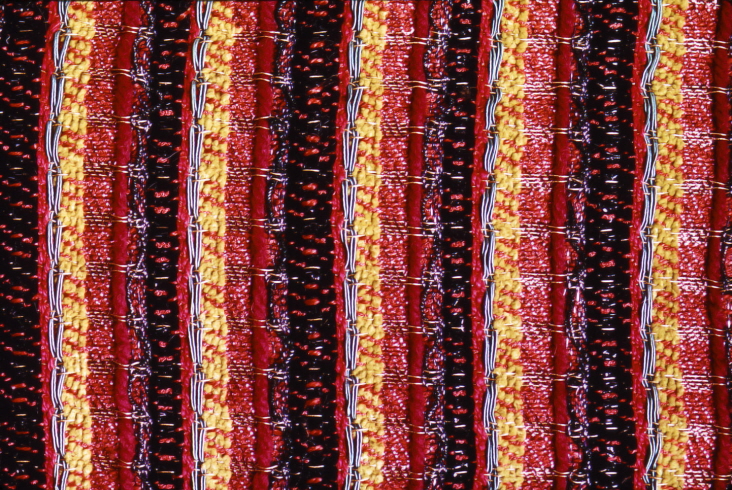 High Mass by Dorothy Liebes, 1943
High Mass by Dorothy Liebes, 1943
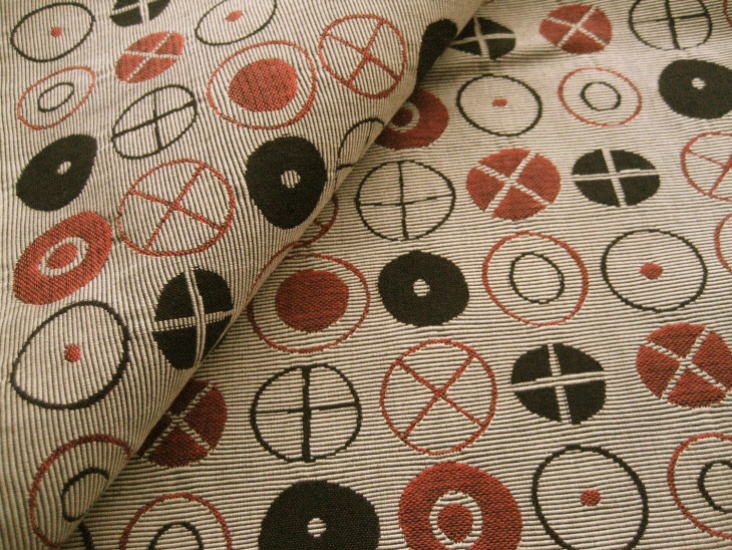 Circles by Charles and Ray Eames
Circles by Charles and Ray Eames
Others like designers Charles and Ray Eames created simple, interesting prints using basic geometric forms following their overarching philosophy of creating functional art accessible to all households.
Whether the “˜true’ Modernist like it or not, the white paint and wood grains favored by so many of the era’s architects were the perfect backdrops for the plethora of colors, prints and textures used in the textiles of the movement.’ How delightfully ironic.
We hope you have been inspired to create a bit of Modernist drama in your own home.’ Why not stamp a beautiful piece of linen with your own graphic?’ I know just the place to find a few yards!








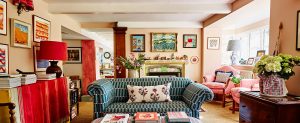
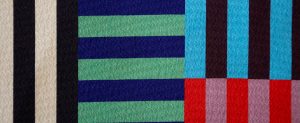

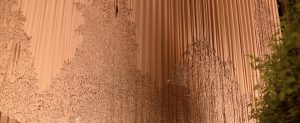








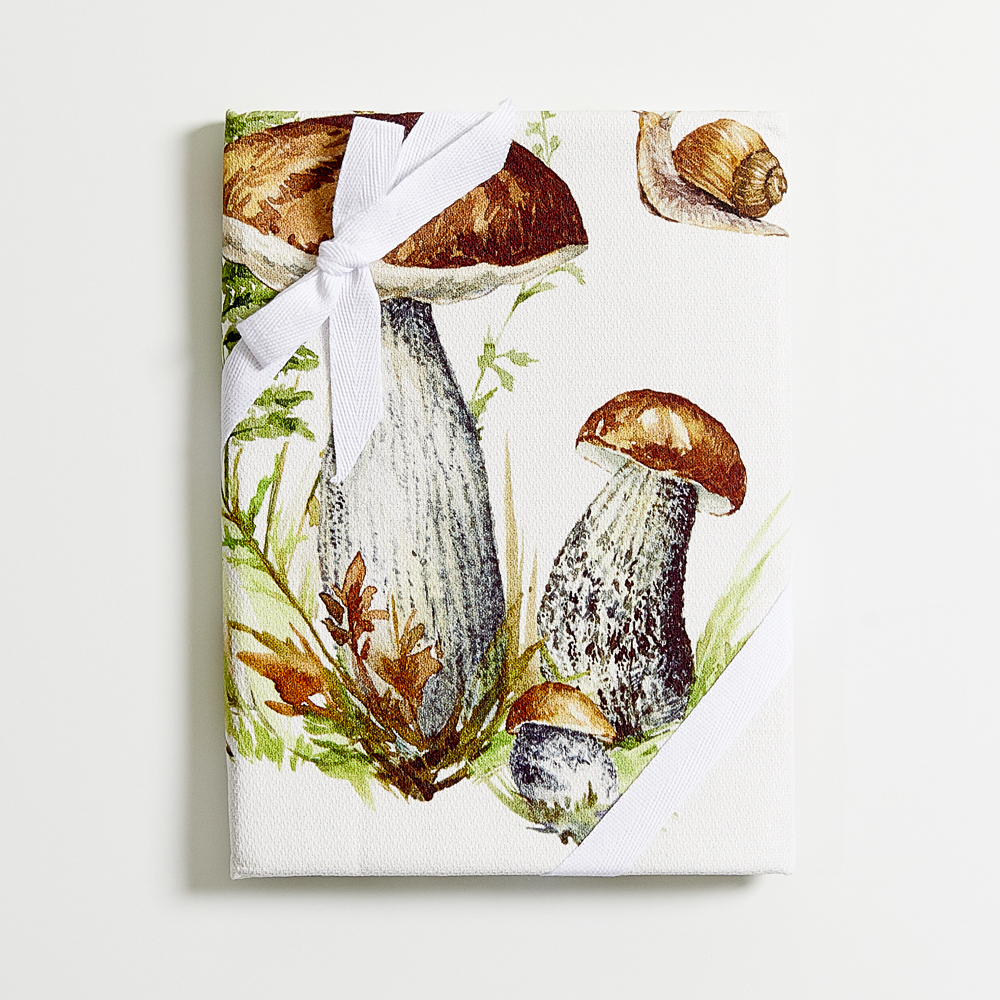















2 Comments
Julie Paschkis
Inspiring patterns! Thanks for the research and for sharing it.
Robinette Fowler
Thanks Julie! I am glad you enjoyed it!